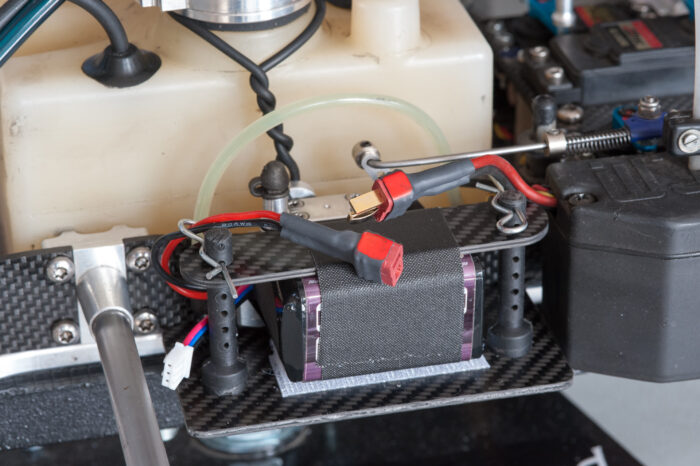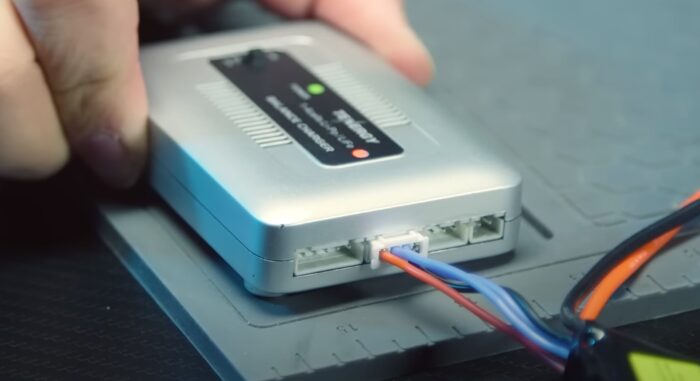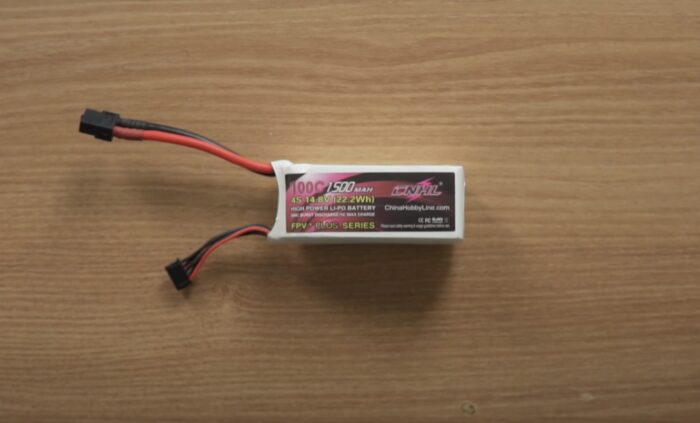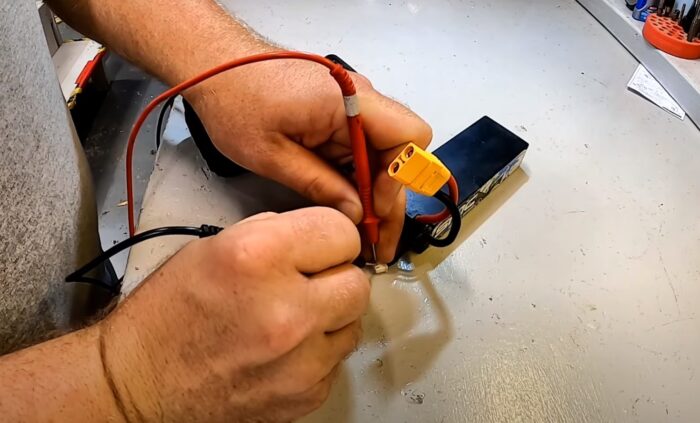Choosing the best LiPo (Lithium Polymer) battery for your HO slot remote-controlled car involves more than simply picking the highest capacity or voltage available.
The right battery can significantly enhance your RC car’s performance, maximize runtime, and ensure safe operation.
Let me share with you how to choose them and why they should be your pick.
Table of Contents
LiPo (Lithium Polymer) Batteries
Lithium Polymer (LiPo) batteries are renowned for their lightweight, high energy density, and the flexibility they offer in terms of shapes and sizes.
These characteristics make them ideal for high-performance applications such as remote-controlled (RC) models and drones, where weight and efficiency are critical.
In my experience, LiPo batteries provide several key advantages:
- High energy density: Allows for longer run times on a single charge, which is vital for applications requiring prolonged usage, such as in electric vehicles or mobile devices.
- Flexible form factors: Their construction allows for innovative designs that can accommodate space constraints, which is particularly useful in modern smartphones and other compact electronic devices.
- High discharge rates: Essential for applications requiring high power output in short bursts, such as slot RC cars and drones.
Despite their numerous benefits, LiPo batteries require meticulous handling and maintenance to ensure safety and longevity. They are more sensitive to overcharging and physical damage than NiMH batteries and can pose serious safety risks if not handled correctly, including the risk of fire or explosion.
Choosing the Right Voltage and Capacity
When selecting a LiPo battery for any application, understanding the voltage and capacity requirements is crucial to ensure the battery optimally powers the device without compromising performance or safety.
Voltage Considerations
The voltage of a LiPo battery is a key determinant of its power output capability and compatibility with electronic devices.
Each LiPo cell typically has a nominal voltage of 3.7 volts, which can be altered by arranging cells in different configurations:
Series Configuration
To achieve higher voltages necessary for more demanding applications, LiPo cells can be connected in series.
The setup increases the overall voltage of the battery pack by adding the voltage of each cell together.
For instance, connecting two cells in series (often referred to as a 2S configuration) results in a battery pack of 7.4 volts, while three cells (3S configuration) provide 11.1 volts.
It is particularly common in applications like ho slot RC cars and drones, where higher voltages are required for powerful motors and enhanced performance.
Parallel Configuration
Connecting cells in parallel does not increase the voltage but increases the overall capacity (mAh) and discharge current, thereby extending the operational time and improving the load handling.
Capacity Considerations
Capacity, measured in milliampere-hours (mAh), indicates the amount of electric charge a battery can store and deliver over time.
It directly influences how long a device can operate before the battery needs recharging:
1. High Capacity Needs
Devices with high power requirements or longer expected operation times need batteries with higher capacities.
For example, a drone might require a battery with a higher capacity to ensure longer flight times between charges.
2. Weight and Size
Higher-capacity batteries are typically larger and heavier. This is a critical consideration in portable devices, where the battery’s weight and size could impact the device’s ergonomics and overall user experience.
In hobbyist RC vehicles, for example, a heavier battery could affect the vehicle’s speed and maneuverability.
3. Balancing Capacity and Voltage
When choosing a battery, there’s often a trade-off between capacity and voltage that must be balanced according to the specific needs of the application.
Higher voltages can sometimes reduce the need for extremely high capacities by providing more power and efficiency, which compensates for the increased energy demand.
Discharge Rating (“C” Rating)
The discharge rating, or “C” rating of a LiPo battery, indicates its maximum safe continuous discharge rate. Its rating is crucial for understanding how much current a battery can safely provide without damaging the battery or affecting its lifespan.
For example, a 1000mAh battery with a 30C rating can safely provide 30 amps of current continuously.
The “C” rating is particularly important in high-performance applications such as electric vehicles or RC models, where a high current draw is necessary to achieve top speeds and robust responses.
Safety and Maintenance
Maximizing the lifespan and safety of LiPo (Lithium Polymer) batteries is crucial due to their sensitive nature and the potential risks they pose if not properly handled.
Adhering to specific guidelines for charging, storage, and handling can help ensure safety and extend the battery’s useful life.
Charging
Proper charging is vital for the safety and longevity of LiPo batteries:
| Practice | Description | Reason |
|---|---|---|
| Balance Charger | Use a charger with balancing capabilities designed for LiPo batteries. | Prevents overcharging and reduces fire risk. |
| Monitor Charging | Charge in a fire-resistant area and use protective enclosures like LiPo-safe bags or metal boxes. | Contains failures and minimizes fire hazards. |
| Recommended Charge Rate | Follow manufacturer’s charge rate guidelines. | Avoids stressing cells, reducing the risk of overheating. |
Storing
How LiPo batteries are stored when not in use can significantly impact their health and safety:
| Storage | Recommendations |
|---|---|
| Optimal Voltage for Storage | Store at approximately 3.8V per cell to maintain health without causing stress or deep discharge. |
| Environment Conditions | Keep in a cool, dry place. Avoid high and extremely low temperatures to prevent degradation and performance issues. |
| Container | Use a fireproof container like a LiPo safe bag or metal box to prevent incidents during storage. |
Handling
Due to their chemical composition and construction, LiPo batteries are inherently fragile and require careful handling:
| Safety | Guideline |
|---|---|
| Physical Protection | Avoid impacts, punctures, or crushing to prevent internal damage and fire risks. |
| Regular Inspections | Inspect for damage like swelling or punctures before and after use; dispose of damaged batteries safely. |
| Avoid Short Circuits | Keep battery terminals away from conductive materials to prevent short circuits. |
| Transportation | Pack and protect batteries securely to avoid damage from vibration and impacts. |
Proper Usage
LiPo (Lithium Polymer) batteries, known for their high energy density and power capabilities, demand rigorous safety protocols to mitigate risks associated with their use.
Protective Measures
Taking precautionary measures during the charging and storage of LiPo batteries is critical:
- Use Protective Gear: Always use a fire-resistant protective case or safety bag specifically designed for LiPo batteries.
- Dedicated Charging Area: Charge batteries in a designated area that is free of flammable materials.
Regular Inspections
Continuous monitoring and regular inspection of the batteries can prevent many common issues:
- Visual Checks: Before and after each use, inspect the battery for any signs of wear, damage, or anomalies such as swelling, leakage, or discoloration.
- Testing and Monitoring: Use a battery tester to monitor the voltage and health of each cell. Disparities in cell voltages can be a precursor to more serious issues.
- Immediate Action: If any abnormalities are detected, stop using the battery immediately to avoid risks like fires or explosions.
Disposal
Proper disposal of LiPo batteries is crucial to prevent environmental damage and personal harm.
These batteries contain materials that can be hazardous if released into the environment or handled improperly.
Safety First
Before disposal, ensure the LiPo battery is fully discharged.
It can be done using a battery discharger, which brings the voltage down to a safe level.
A fully discharged battery minimizes the risk of ignition during the disposal process.
Following Proper Protocols
Familiarize yourself with and adhere to local regulations regarding the disposal of electronic waste.
LiPo batteries should be treated as hazardous waste due to their chemical components.
Use designated electronic recycling centers for disposing of LiPo batteries. These facilities are equipped to handle and recycle hazardous materials safely.




